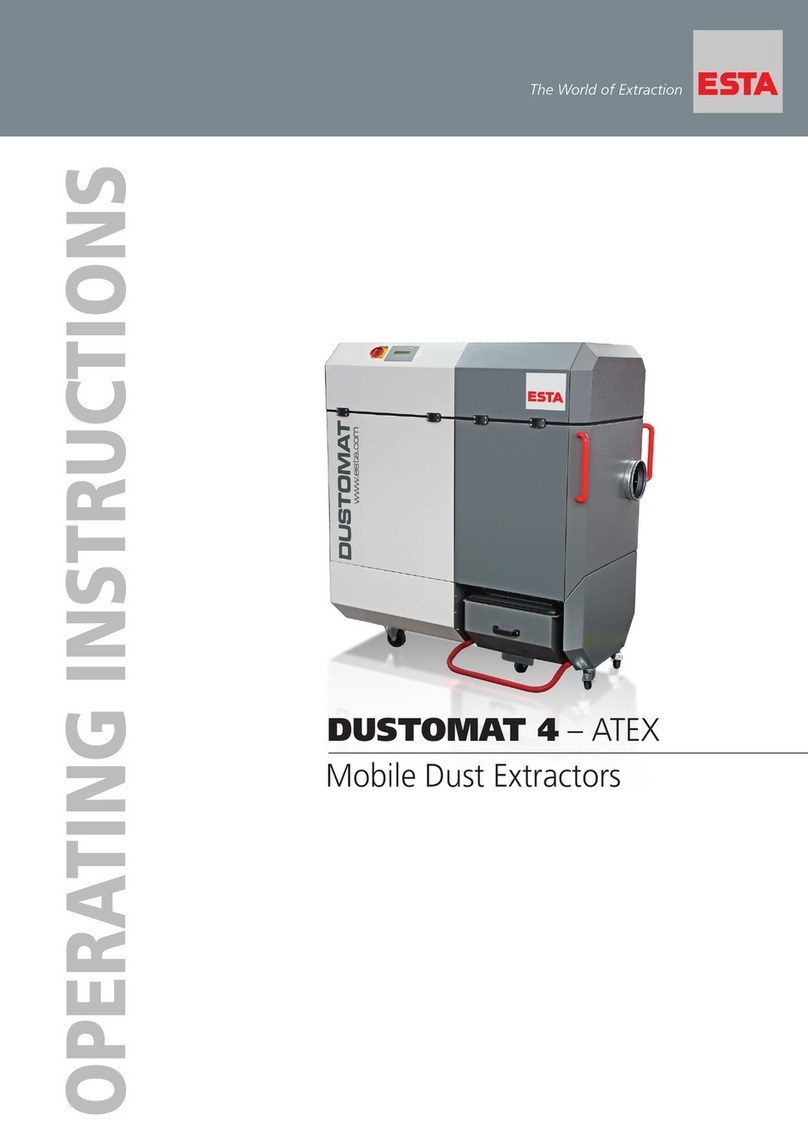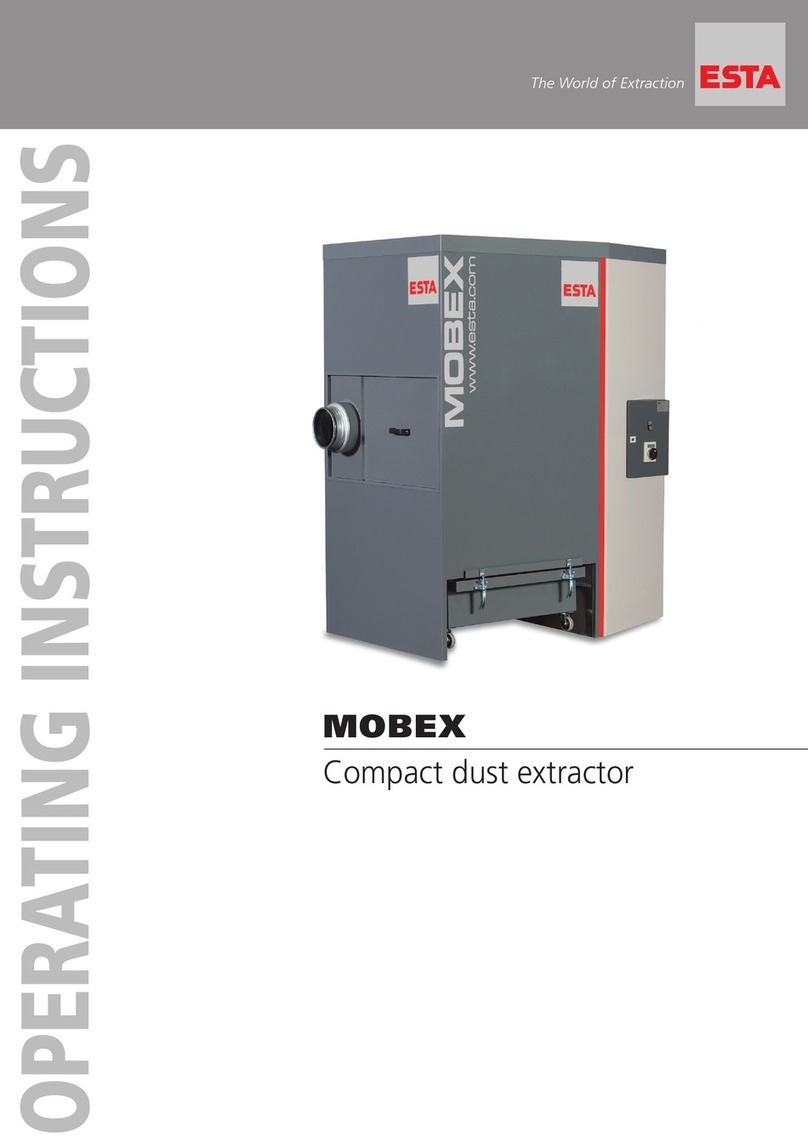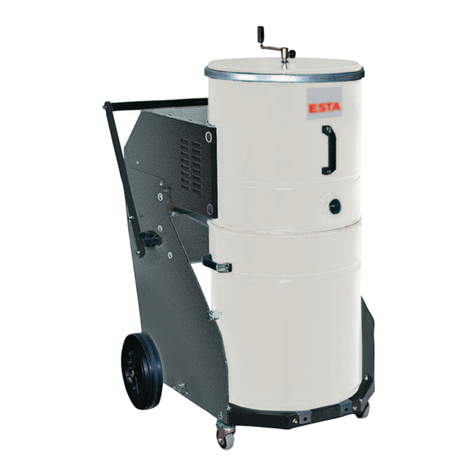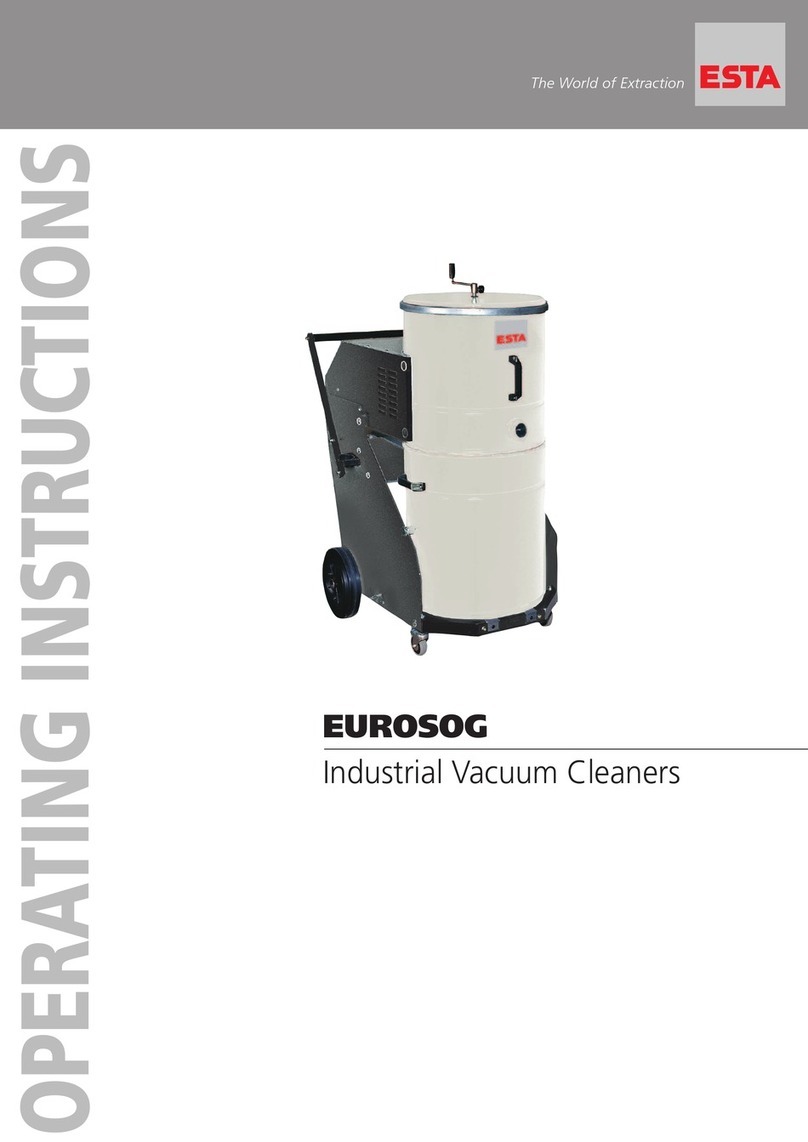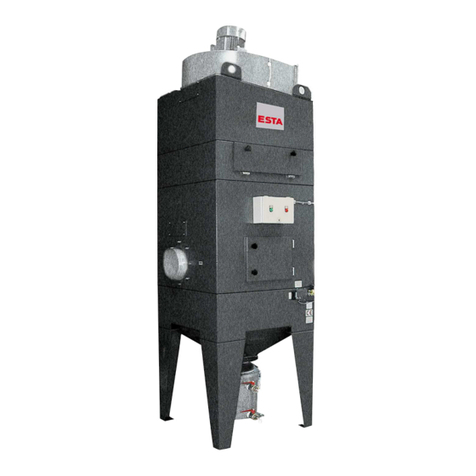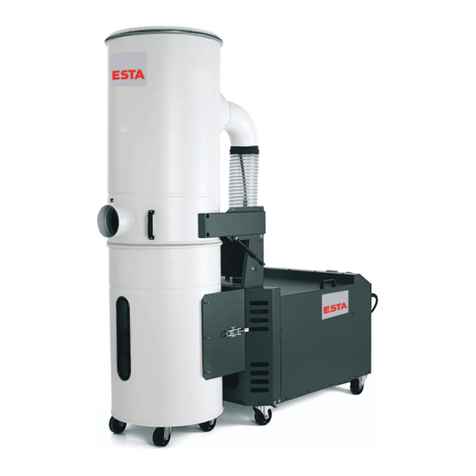
09201-52-01 DUSTOMAT-10 3
Contents
Contents .....................................................................................................................................3
1.General safety notes ...........................................................................................................4
2.Preventing mechanical hazards.........................................................................................6
3.Preventing electrical hazards.............................................................................................6
4.Preventing dust hazards.....................................................................................................6
5.Intended use ........................................................................................................................7
6.Technical data and description..........................................................................................8
6.1 DUSTOMAT-10 ..................................................................................................................8
6.2 Functional description.........................................................................................................9
7.Delivery and commissioning ............................................................................................ 10
7.1 Delivery and transport ......................................................................................................10
7.2 Commissioning................................................................................................................. 10
8.Maintenance and troubleshooting ................................................................................... 12
8.1 Maintenance instructions..................................................................................................1 2
8.2 Inspection and maintenance intervals ..............................................................................13
8.3 Troubleshooting................................................................................................................ 15
9.Monitoring the minimum volume flow .............................................................................16
9.1 Dust extractor - operation .................................................................................................16
9.2 Industrial dust extractor - operation ..................................................................................17
10.Cleaning .............................................................................................................................17
10.1 Cleaning the filter............................................................................................................ 17
10.2 Filter replacement...........................................................................................................18
11.Disposal ............................................................................................................................. 19
11.1 Disposing of collected dust materials .............................................................................19
11.2 Disposing of the dust extractor .......................................................................................20
12.Optional equipment...........................................................................................................21
12.1 Pre-separator ................................................................................................................. 21
13.Device diagram..................................................................................................................22
14.Declaration of conformity .................................................................................................23
Notes.........................................................................................................................................24
